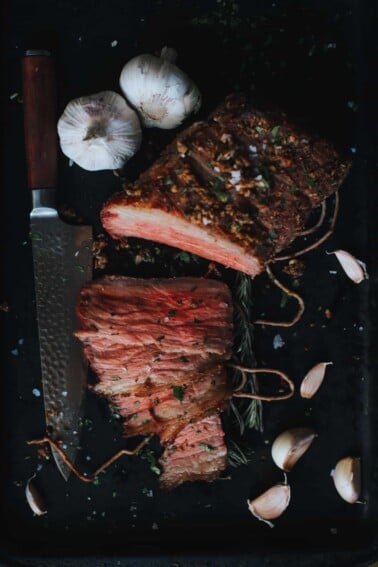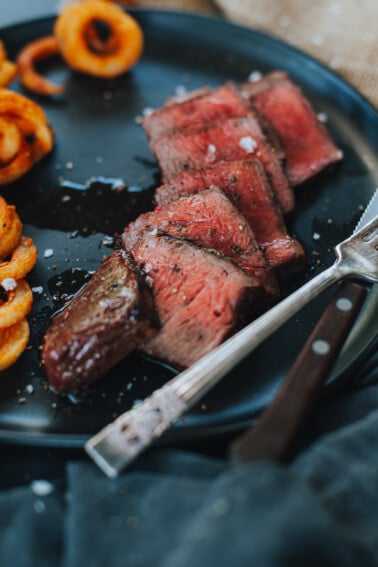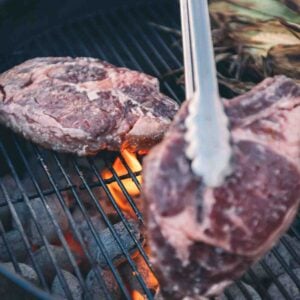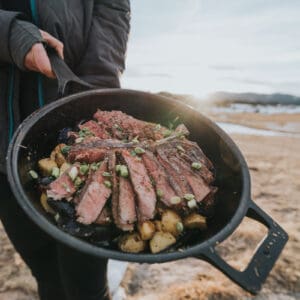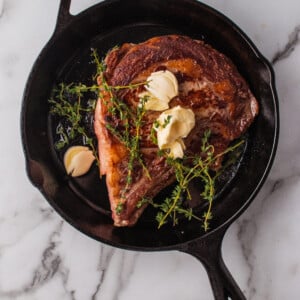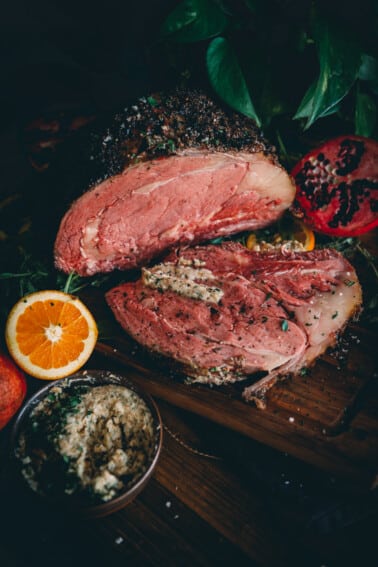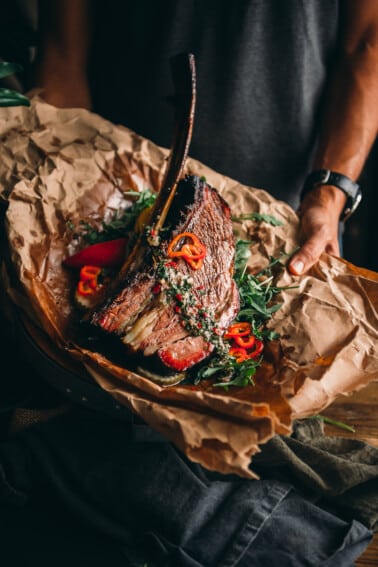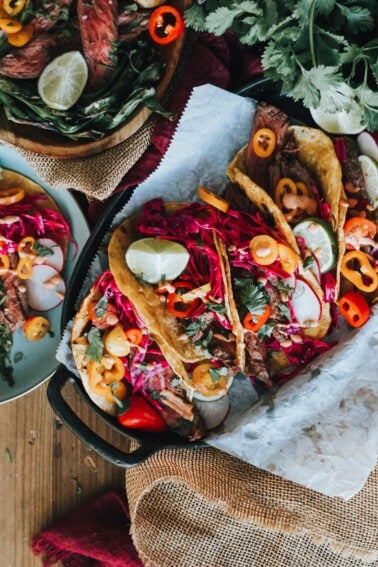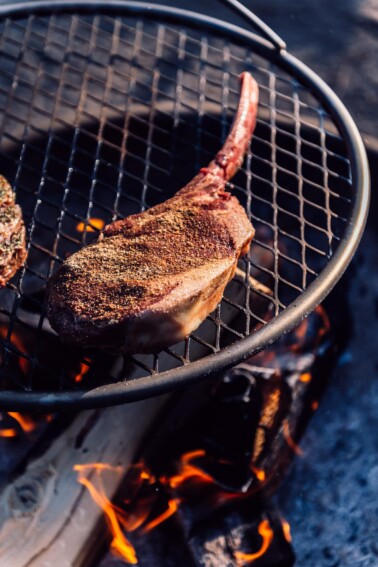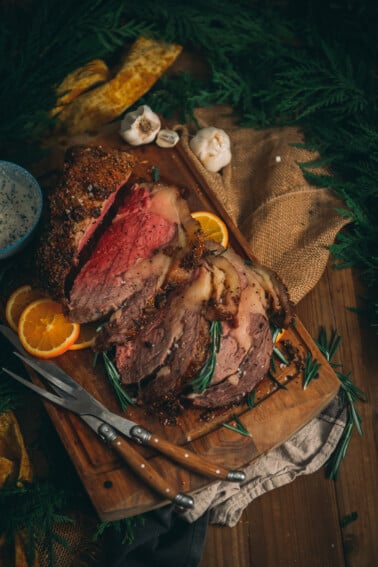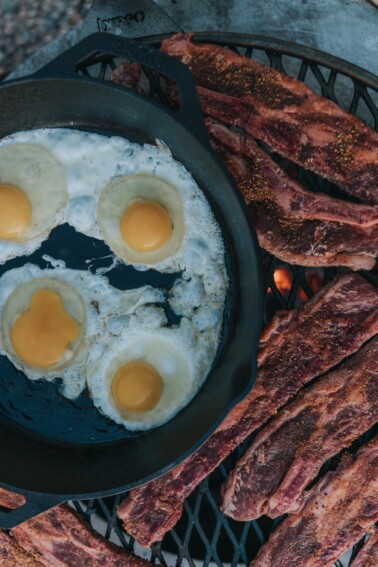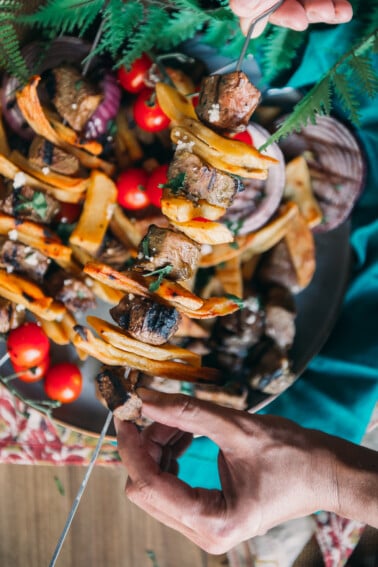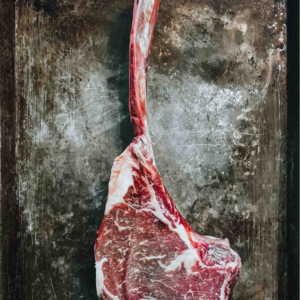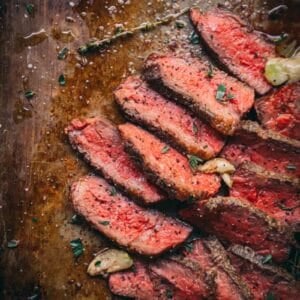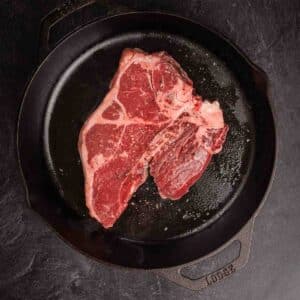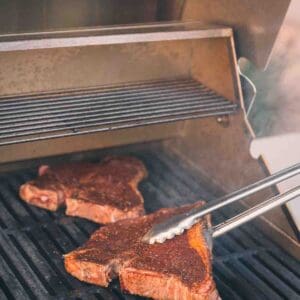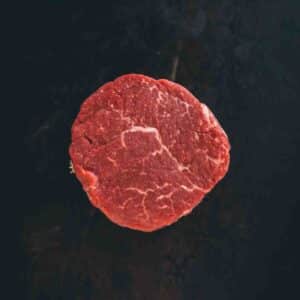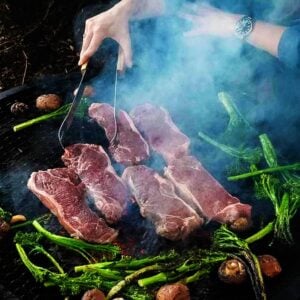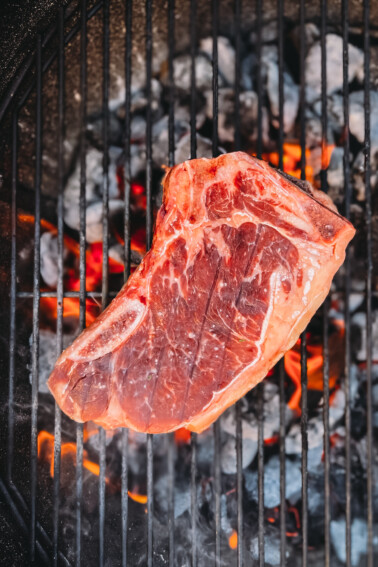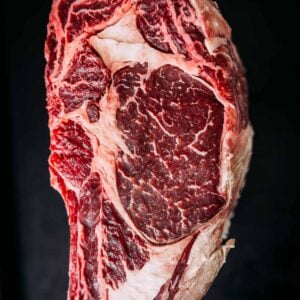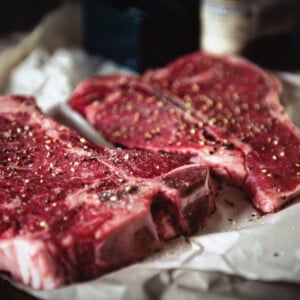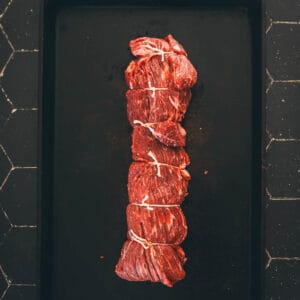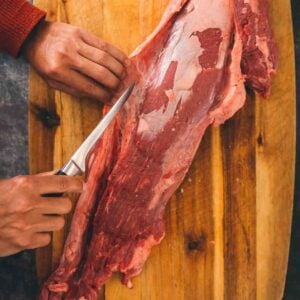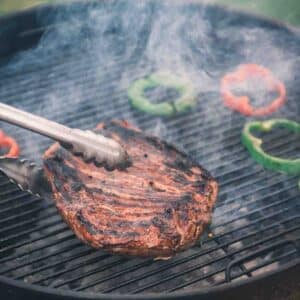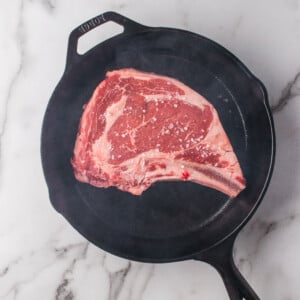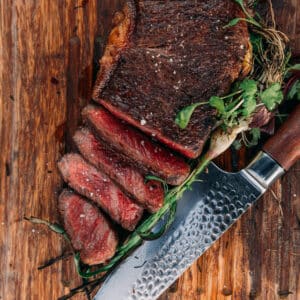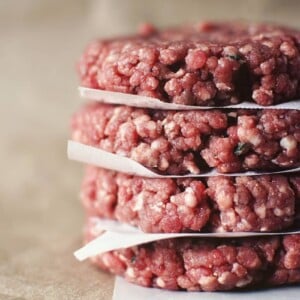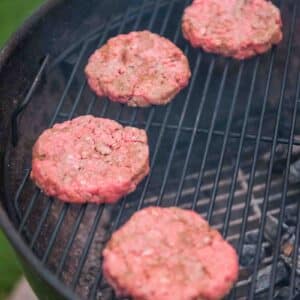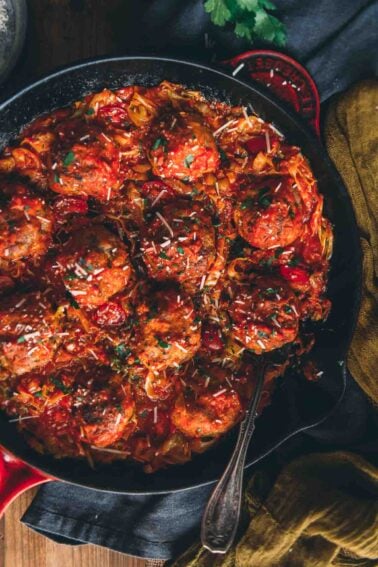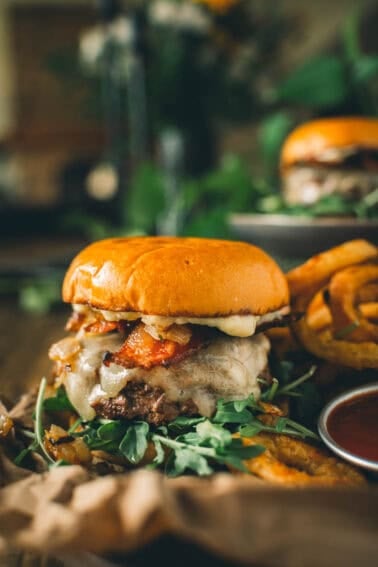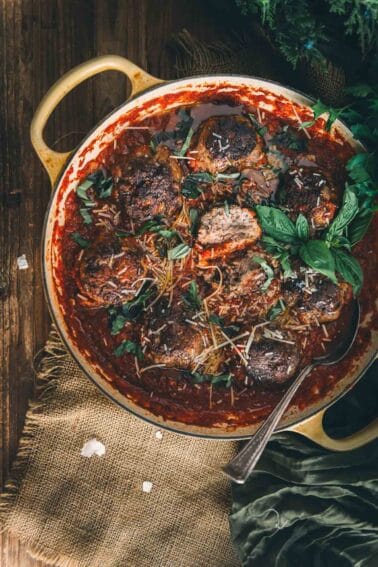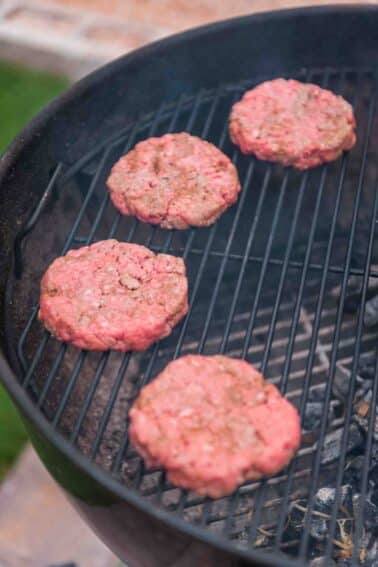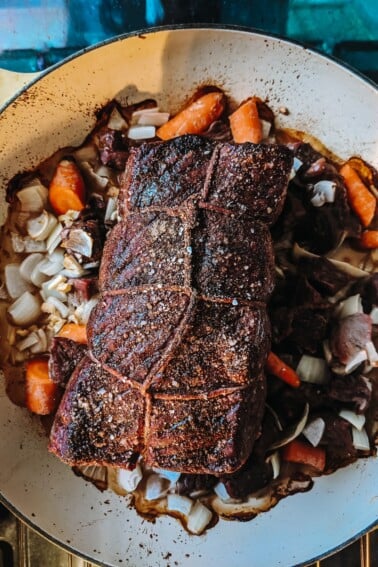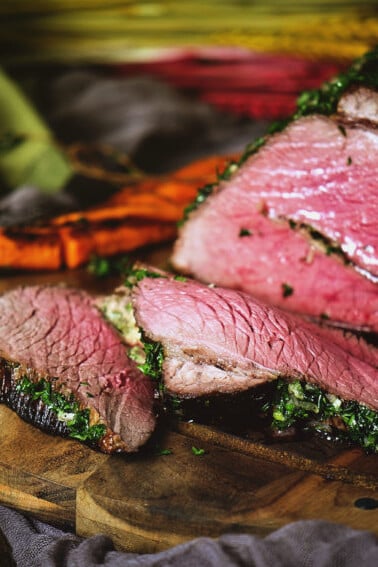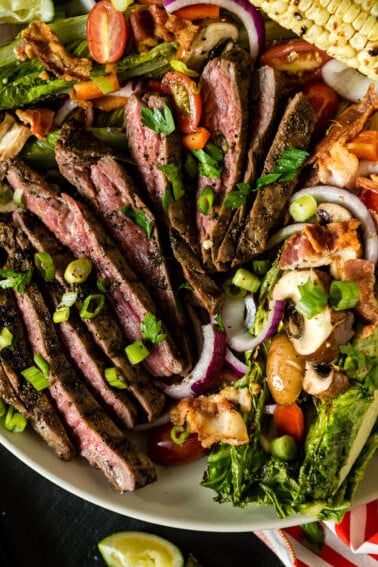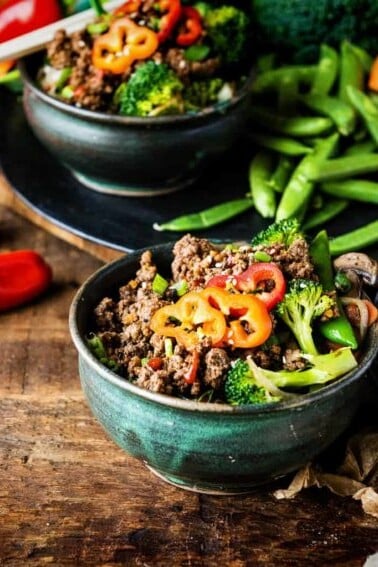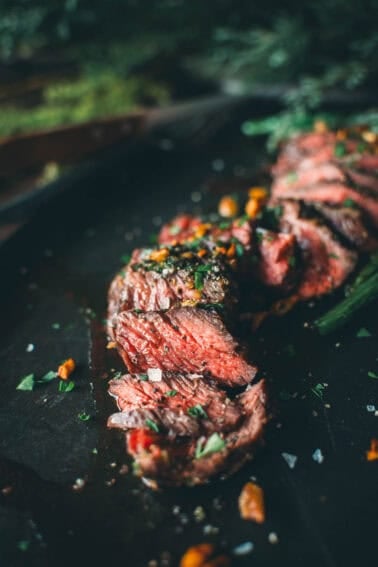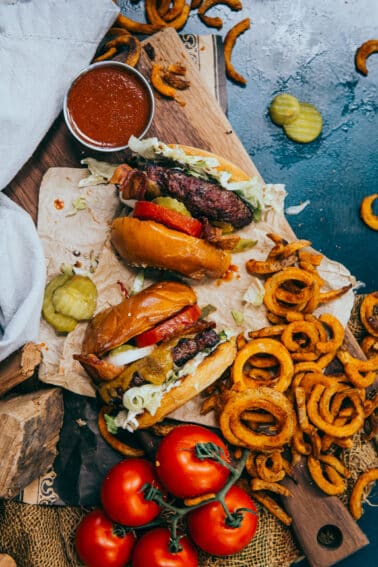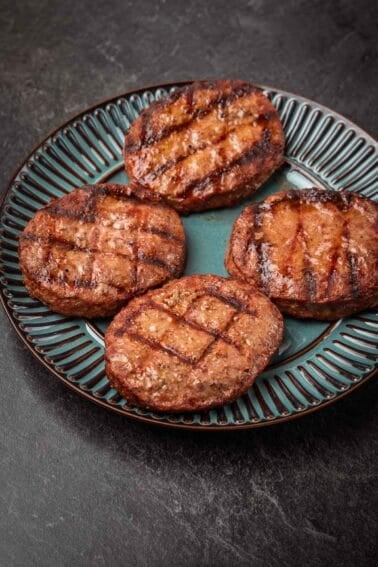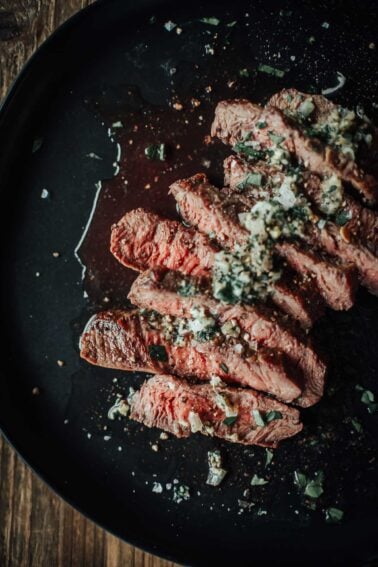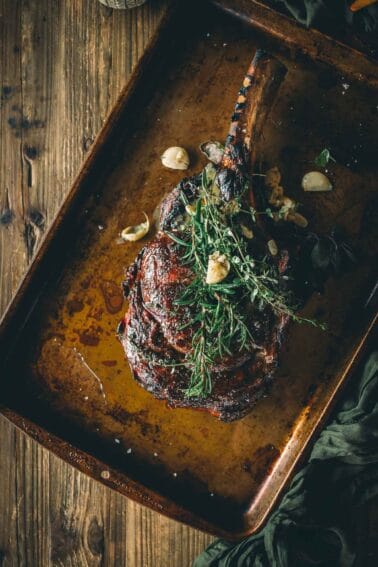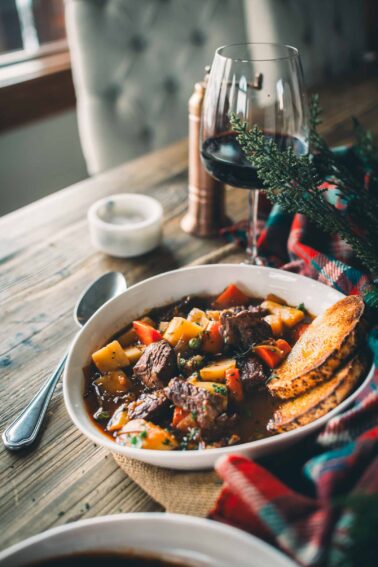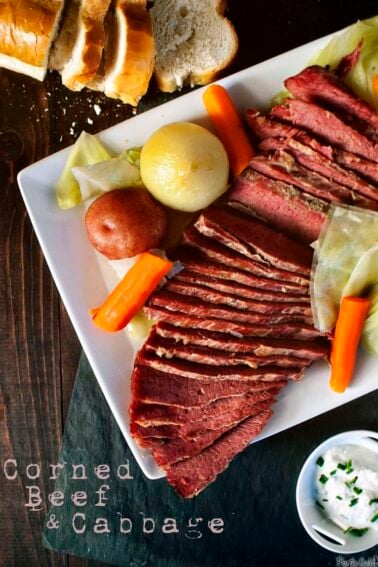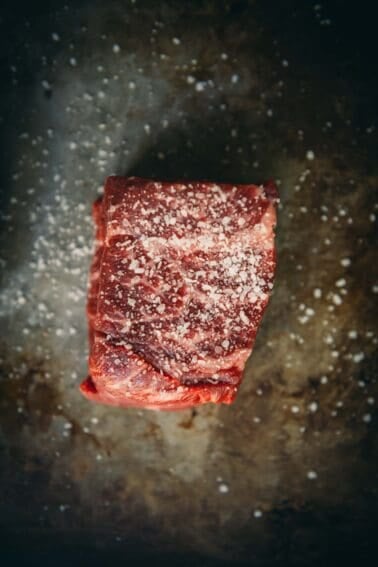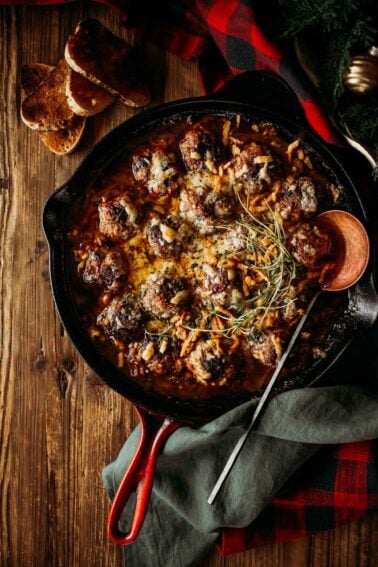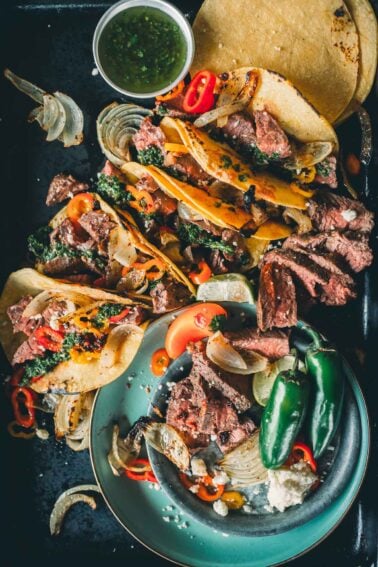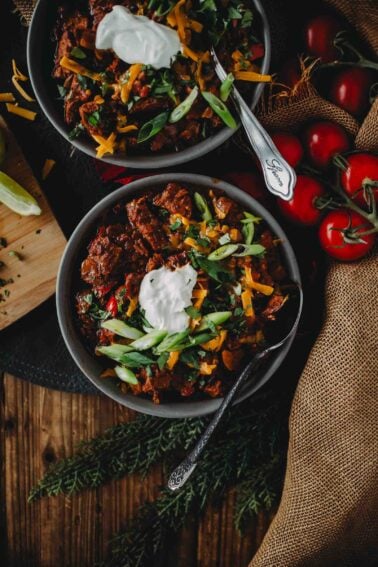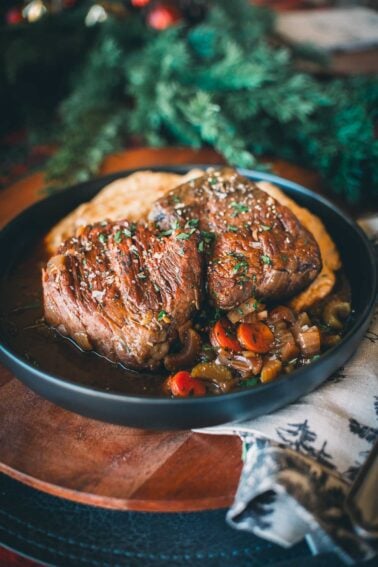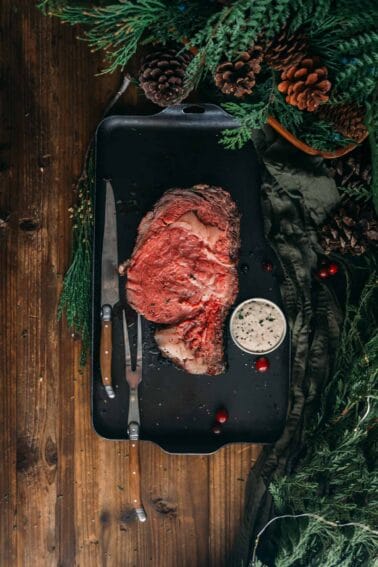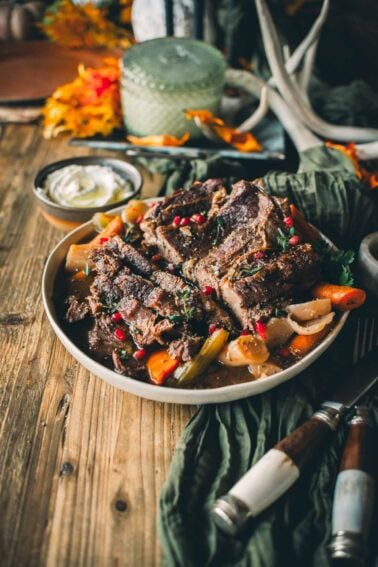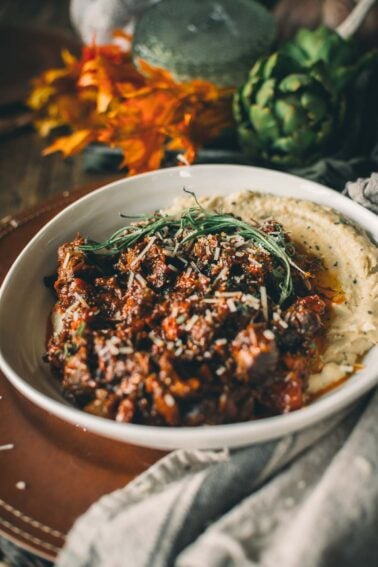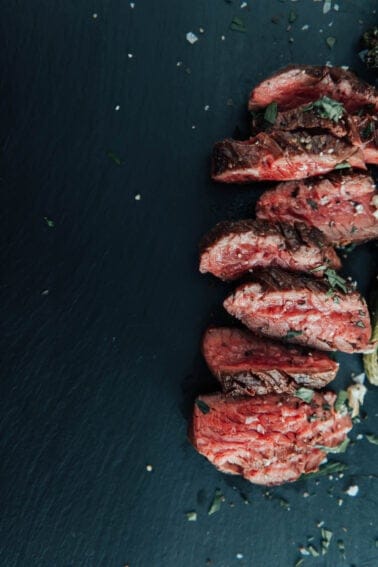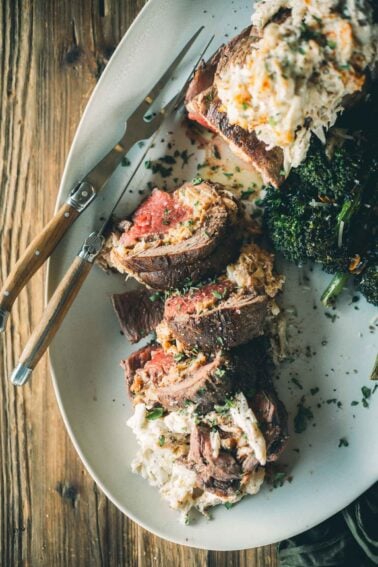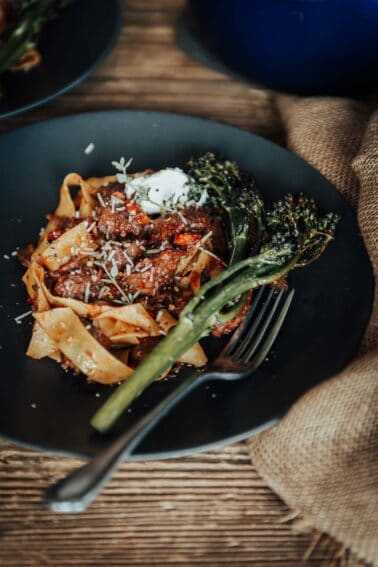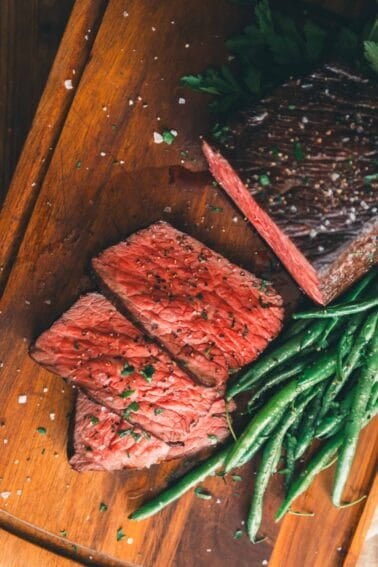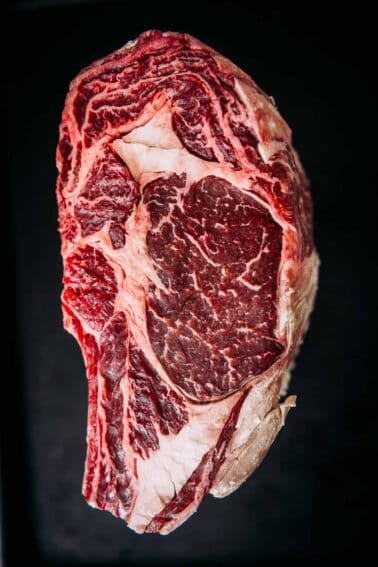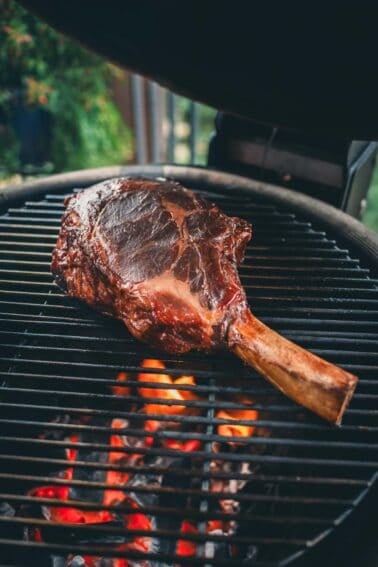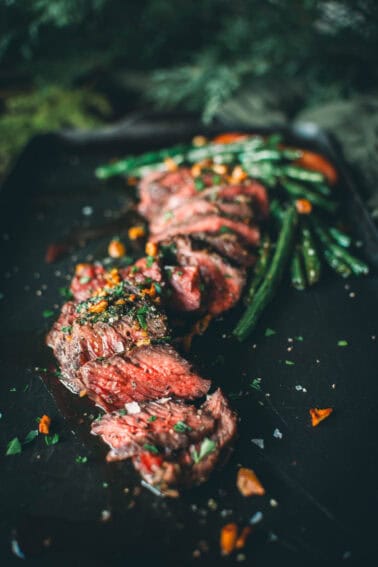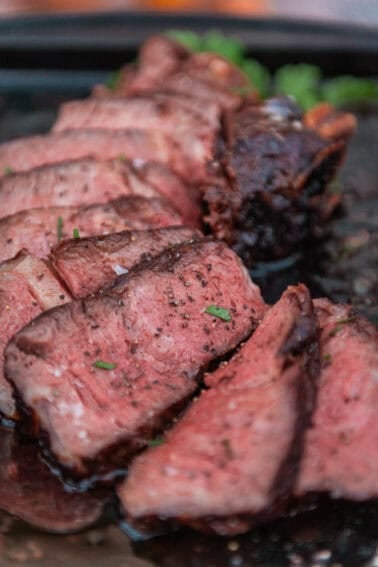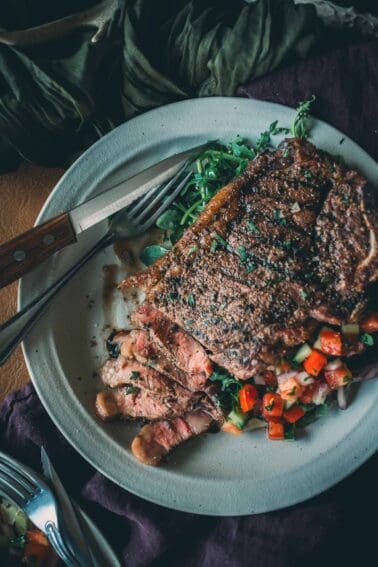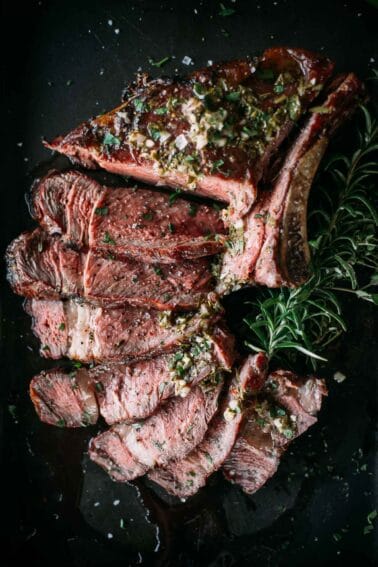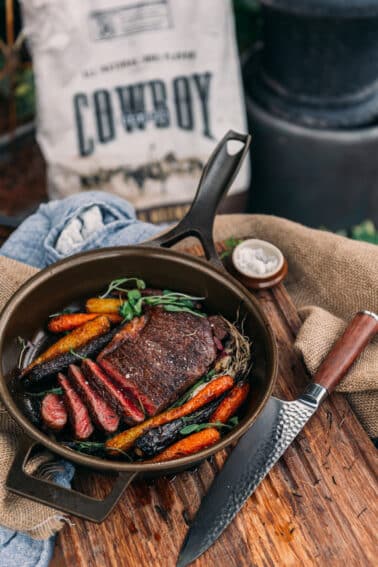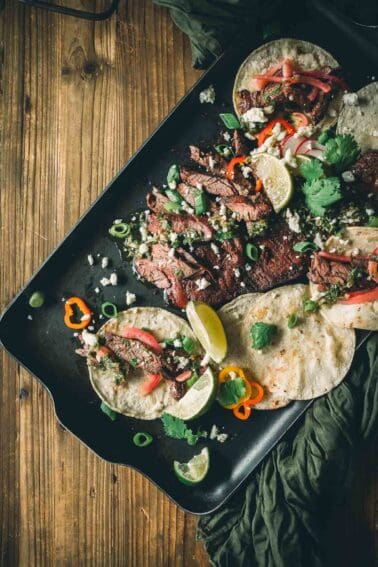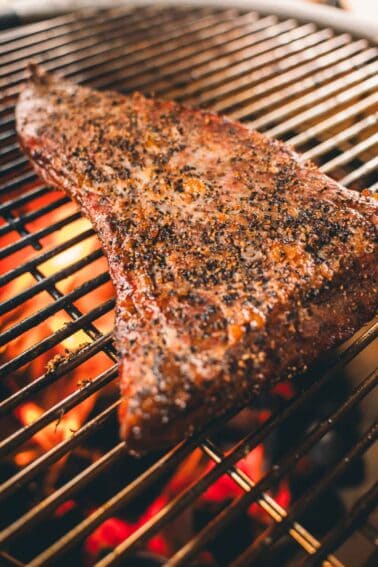Beef Recipes
Most Popular Beef Recipes
Beef Recipes
Charcoal Grilled Roast Beef
Beef Recipes
Grilled Top Sirloin Steaks
Beef Recipes
Quick and Easy Steak Tacos
Helpful How-Tos
About Beef
When it comes to an amazing source of protein and nutrients, it’s hard to top beef. Packed with over 10 essential nutrients, a typical 3 oz serving provides up to 25 grams of protein, making beef the king of the feast and the core of a satisfying meal.
With 8 main primals and a myriad of cuts from each, beef is easily what’s for dinner. Here we’ve gathered our best beef recipes, tips, and tutorials to help you master every cook.
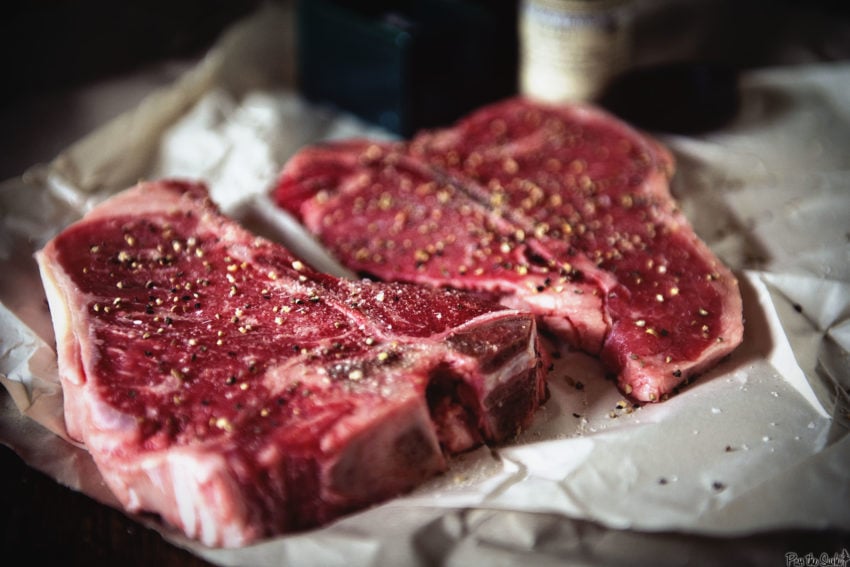
What is Marbling?
Marbling is the thin white flecks of fat distributed within a cut of meat and is the biggest component for flavor in a cut. Not all cuts have a lot of marbling running through them, and some do. The marbling renders while cooking and creates that decadent umami sensation we love with a juicy, tender steak and why 85% ground beef just tastes better in a hamburger.
Marbling can be seen in the meat when choosing a cut. Look at the evenly distributed marbling within the cut. The larger intramuscular fat seen between two muscles, like on a brisket or prime rib also help add deep beefy flavor and tender texture when properly cooked.
Smoked Beef Recipes
Beef Recipes
Smoked Prime Rib
Beef Recipes
Smoked Beef Ribs (Dino Ribs)
Beef Recipes
Smoked Chuck Roast
Beef Recipes
Easy Smoked Pastrami
Our favorite Grilled Beef Recipes
Beef Recipes
Bavette Steak Tacos
Beef Recipes
How to Cook a Tomahawk Steak
Beef Recipes
Smoked Prime Rib on a Gas Grill
Beef Recipes
Easy Grilled Korean Short Ribs
Beef Recipes
Easy Grilled Tri-Tip
Campfire Recipes
Grilled Steak Kabobs
Steak Guides
Beef Temperature Guide
Knowing exactly what temperature to cook your beef to is an essential skill to mastering the most delectable recipes. However, in some cases, it is best to take beef past the recommended safe temperature, like for pulled chuck roasts and fork tender shanks.
| RARE 120 °F | MEDIUM RARE 130 °F | MEDIUM 135 °F |
| MEDIUM WELL 145 °F | WELL DONE 155 °F | GROUND 160 °F |
Take into consideration that the temperature will continue to rise from 5 °F to 10 °F while the meat rests.
Always use a quality instant-read digital thermometer inserted away from the bone in the thickest part of the meat.
BASIC TIPS FOR COOKING BEEF:
For the best flavor and texture, always learn the best internal temperature for your favorite beef cuts before cooking and if a low and slow cooking method or hot and fast cooking method is best. Season with salt as you go to guarantee not overseasoning, and let the flavor of the meat shine through for a delicious meal.
Steak cuts less than 1-inch thick love hot direct heat of open flame or pan searing to a temp no more than medium. While big dino ribs and other tough cuts love a low and slow smoke or braise, taking the temperature all the way to 210°F to allow the muscle fibers to release and break down for the most tender bite.
Mastering time and temperature is the biggest learning curve for all cooks. And remember, fat is flavor, so a wonderful compound butter to finish your perfectly executed cook is always a great idea.

Easy Steak Recipes
Beef Recipes
Cast Iron Steak with Sauce au Poivre
Beef Recipes
Pan Seared New York Strip Steak and Scallops
Beef Recipes
Chargrilled Kansas City Cut Steak
Beef Recipes
Grilled Bavette Steak
Know your Beef labels
There’s a lot of information on meat labels these days. Here’s a quick overview of what that info means:
- Grass Fed: this label means that the animal grazed on grass after being weaned from mother’s milk. It should be noted that beef cattle all graze in pastures for some duration of their lives. However, for a variety of economic, environmental, and production reasons, most are transitioned to grain and roughage diets for several months while they are finishing coming to market weight. Curious about grain fed vs grass finished? Check this article out.
- No Antibiotics: The No Antibiotics label means that the animal was never administered antibiotics, and the producer must provide paperwork to the USDA to prove this. Regardless of administration of antibiotics or not, all beef is tested to ensure safety. Antibiotics are used to treat sick animals on an individual basis by trained veterinarians and staff to ensure the quality of life for the animal and safety of the final product. Animals that have been treated are monitored for recovery and, with growing food safety standards, It is required that any animal that has been treated with antibiotics be held a standard withdrawal period, showing no trace of the antibiotic in the animal’s system, before going to processing.
- No Hormones: This label means the animal was never administered additional growth hormones, though all animals naturally produce hormones. Additional paperwork is required to prove this to the USDA. For a quick visual to compare the estrogen levels click here.
- Organic: USDA Organic Beef must follow the USDA National Organic Program and be fed only an organic diet, and have not been treated with hormones. The exact text from the USDA site reads, “regulations require that animals are raised in living conditions accommodating their natural behaviors (like the ability to graze on pasture), fed 100% organic feed and forage, and not administered antibiotics or hormones.” Check the USDA page for more information on USDA Organic Beef here.
Beef Guides and Resources
Beef Grading
Prime, Choice, and Select = Quality of the beef cut. When you see Prime, Choice, or Select on your beef, you are essentially reading the ‘grades’ of meat. It is a system that has been standardized and is in common practice regulated by the USDA. Each cut will be graded depending on the marbling, age of the animal, and other critical features for the tenderness and flavor of the meat. All of these choices make for quality cuts of beef to be used in your kitchen, and we bounce back and forth depending on our budget and needs.
Veal recipes
Recreate classic veal recipes in your own kitchen
Veal Recipes
Classic Veal Milanese
Veal Recipes
Ground Veal Tacos
Veal Recipes
Veal Piccata
Veal Recipes
Veal Meatballs
Veal Recipes
Stuffed Breast of Veal Recipe
Veal Recipes
Air Fryer Veal Parmesan
Ground beef Dinner Ideas
Beef Recipes
Garlic Butter Bacon Cheeseburger
Beef Recipes
Homemade Polpette Recipe
Beef Recipes
Cheeseburger Salad
Beef Roast Recipes
Beef Recipes
Melt in Your Mouth Eye Round Roast
Beef Recipes
Herb Rubbed Top Round Roast Beef
Beef Recipes
Ultimate Smoked Roast Beef
Easy Beef Recipes
Dinner Recipes
Spicy Szechuan Beef Noodles
Beef Recipes
Make Ahead Beef Enchiladas
Beef Recipes
Quick Fried Tex-Mex Empanadas
Dinner Recipes
Grilled Coffee Crusted Flank Steak Salad
Beef Recipes
Korean Beef Bowls
Beef Recipes
Birria Nachos
What to serve with beef
Beef is best served with dishes that complement and balance its taste. Try smoked mushrooms to deepen the umami flavor, a sharp homemade cranberry sauce to cut through the fat, or indulgent creamed spinach to indulge. Add layers with condiments like herbaceous cilantro chimichurri or homemade barbecue sauce to richer cuts.
Newest Beef Recipes
Meat Labs
Steal These Steakhouse Secrets
Meat Labs
Pro Tips for Cooking a Perfect Steak
Beef Recipes
Classic Boiled Corned Beef and Cabbage
How To
How to Dry Brine a Steak
Ground Beef
French Onion Meatballs
Beef Recipes
Broiled Hanger Steak Tacos with Chimichurri
Beef Chuck
Guinness Beef Stew Recipe
Beef Recipes
Smoked Brisket Chili
Beef Recipes
Beer Braised 48 Hour Sous Vide Short Ribs
Beef Recipes
The Best Smoked Prime Rib on a Pellet Grill
Beef Recipes
Sous Vide Hanger Steak Frites
Beef Recipes
Smoked Beef Shank Over the Top Chili Recipe
Beef Recipes
Slow Cooker Beef Shanks
Beef Recipes
Sous Vide Teres Major Steak Recipe
Beef Recipes
What Is a Butcher’s Cut?
Beef Recipes
Crab-Stuffed Beef Tenderloin
Beef Recipes
Osso Buco
Beef Recipes
How to Cook Flat Iron Steak
Veal Recipes
Classic Veal Milanese
Beef Recipes
Sous Vide Roast Beef
Beef Recipes
Garlic Butter Basted Grilled Teres Major Steak
Beef Recipes
Grilled Cowboy Steak
Veal Recipes
Ground Veal Tacos
Beef Recipes
Grilled Denver Steak with Herb Butter
Campfire Recipes
Foil pack Sausage and Potatoes
Beef Recipes
Smoked Cowboy Steak
Beef Recipes
Grilled Strip Steaks
Beef Recipes
How to Smoke a Ribeye
Beef Recipes
How to Reverse Sear a Steak
Beef Recipes
Grilled Skirt Steak Tacos
Beef Recipes

